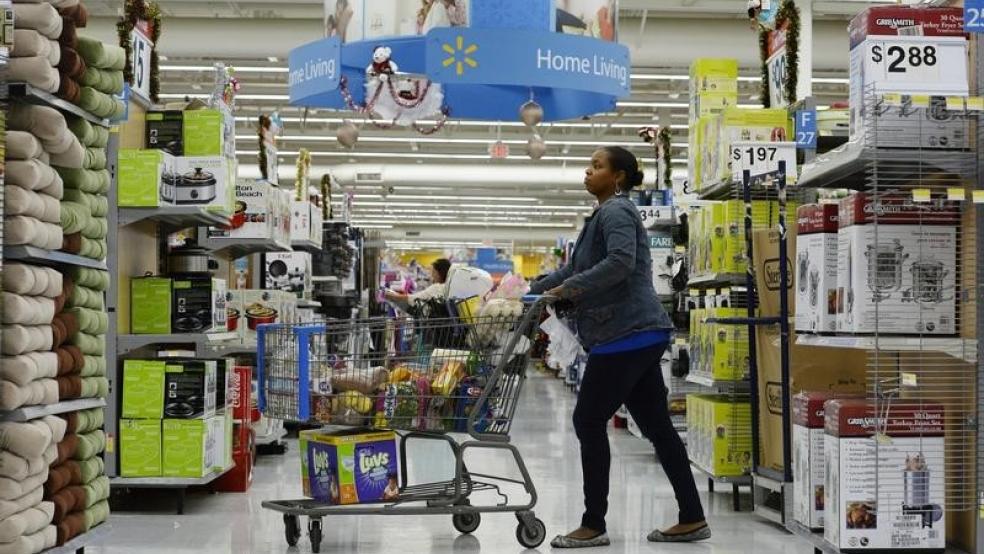The U.S. economy surged in the third quarter, as gross domestic product grew at a 4.9% annualized basis, according to an initial estimate released by the Commerce Department Thursday.
The strongest quarterly growth since late 2021 was driven by consumer spending on both goods and services, inventory restocking and government spending at the state, local and federal levels.
Consumers, boosted by slowing inflation and rising wages, played a central role in the exceptionally strong results as they continued to defy expectations of a slowdown. Diane Swonk, chief economist at KPMG, said the numbers indicate that consumers and businesses are in better financial shape than many analysts thought. “Households and firms used the stimulus provided during the first two years of the pandemic to further shore up their balance sheets. They locked into ultralow rates when they could, paid down existing debt and banked the excess savings they amassed during initial lockdowns,” she wrote Thursday. “Recent revisions revealed that households alone still had $1.4 trillion in excess savings as of August, nearly double previous estimates.”
Defense spending also played an important role in the strong growth, as the U.S. military restocked some of the weapons and ammunition that have been sent to Ukraine. Defense expenditures rose by 4.9% on an annual, inflation-adjusted basis, the fastest pace since 2019.
The report included good news on inflation, as well. The personal consumption expenditures (PCE) price index increased 2.9% in the third quarter, while the core PCE index — which leaves out volatile fuel and food prices — increased 2.4%. “Inflation is now officially *two-point-something-percent*, which puts us within spitting distance of the Fed’s target,” said University of Michigan economist Justin Wolfers.
A win for ‘Bidenomics’: The White House hailed the report as a validation of the president’s economic policies. “I never believed we would need a recession to bring inflation down – and today we saw again that the American economy continues to grow even as inflation has come down,” President Joe Biden said in a statement. “It is a testament to the resilience of American consumers and American workers, supported by Bidenomics—my plan to grow the economy by growing the middle class.”
Biden noted that the unemployment rate has been below 4% for 20 consecutive months, and that household wealth has surged to record highs. “I hope Republicans in Congress will join me in working to build on this progress, rather than putting our economy at risk with reckless threats of a shutdown or proposals to cut taxes for the wealthy and large corporations, while slashing programs that are essential for hard-working families and seniors,” he added.
Treasury Secretary Janet Yellen also celebrated the report, saying it points to a solid economy with inflation on the decline and no signs of a recession. She took the opportunity to tweak critics and forecasters who said the Biden administration couldn’t slow inflation while maintaining growth. “Frankly, it’s only, it’s about a year ago since I believe a Bloomberg model predicted that by October of 2023 – now, namely – that you saw the odds of recession at 100%. I don’t think we have that. You know, what we have looks like a soft landing with very good outcomes for the U.S. economy.”
Slowdown ahead? Expectations for GDP are much lower for the fourth quarter, and few analysts are predicting growth at anywhere near the third quarter’s level, while some still see a recession looming. The investment in inventories will likely slow if not reverse, the resumption of student loan payments will weigh on millions of households, and surging interest rates could hamper car and house purchases. “We can already see the drag forming in the final three months of the year,” Joseph Brusuelas, chief economist at the consulting firm RSM, said.
Michael Arone, chief investment strategist for U.S. SPDR Business at State Street Global Advisors, told CNBC that the consumer “shopping spree” in the third quarter was probably over. “Going forward, the consumer’s not going to spend at the same rate, the government is not going to spend at the same rate, and businesses seem to be slowing down their spending as well,” he said. “This suggests this might be the peak GDP figure, at least in the next few quarters.”
A jolt for the Fed? The mix of strong growth and weak expectations makes it hard to predict how the Federal Reserve will react to today’s GDP report. “The resilience of the economy is both a blessing and a curse for the Federal Reserve,” Swonk said. “It ups the odds of the once elusive soft landing, while raising the risk of reigniting the cooling embers of inflation.”
Still, most analysts think the results will not push the Fed to raise interest rates again, with Swonk saying she expects to see another “hawkish hold” when the Federal Open Market Committee concludes its next meeting on November 1. Arone echoed that view, saying “I don’t think anything in this report changes the outlook for monetary policy.”




